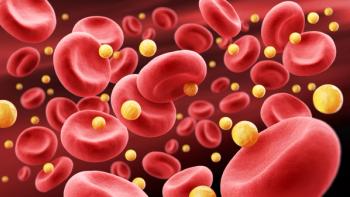
Most New HIV Transmissions in US Fueled by Undiagnosed, Untreated Infection
An updated transmission model indicates that most new HIV infections occur due to a lack of diagnosis and treatment.
Prompt HIV diagnosis and treatment is necessary to stem the spread of infection in the United States, according to a new CDC Vital Signs report.
Individuals who achieve and sustain viral suppression through treatment effectively prevent the spread of HIV. However, across the HIV care continuum, a new transmission model indicates that most transmissions occur from individuals with HIV who have not yet been diagnosed or treated.
According to the CDC, a lack of effective treatment results in worse outcomes for individuals with HIV and higher rates of transmission, accounting for 38,700 new HIV cases in 2016.
For the analysis, the Progression and Transmission of HIV (PATH 2.0) model was updated to estimate the 2016 US transmission rates by step along the HIV care continuum, population risk group, and age risk group. The model tracked individuals as they moved along the care continuum.
The data showed that the overall estimated HIV transmission rate in 2016 was 3.5 new infections per 100 person-years, with the rate of transmission decreasing with the progression along the HIV care continuum. The researchers noted that individuals who were acutely infected and unaware of their infection had the highest transmission rate (16.1), followed by those who were non-acutely infected and unaware (8.4), those aware of their HIV infection but not receiving care (6.6), and those receiving HIV care but not virally suppressed (6.1). Among those taking antiretroviral therapy (ART) and who are virally suppressed, the rate was 0.
Overall, the PATH 2.0 model estimated that HIV transmission in 2016 occurred primarily from individuals with HIV who were unaware of their infection and individuals who were diagnosed but not in care. Collectively, these 2 groups made up approximately 80% of new infections.
Increasing awareness of HIV infection status and diagnosing new infections is crucial to improving efforts to reduce transmissions. Routine and targeted HIV testing can serve as complementary approaches to addressing the lack of knowledge surrounding status, according to the report.
“Providers play an important role in this effort by screening patients for HIV infection, actively linked and engaging persons with HIV infection into ongoing, comprehensive care, and emphasizing the importance of achieving and maintaining viral suppression for personal health and prevention benefits,” the researchers explained.
To address individuals with diagnosed infection who are not in care, the researchers indicated that tailored support services can help patients who may face barriers such as lack of insurance or resources, stigma and discrimination, and mental health and substance use issues. Increasing public awareness of the benefits of viral suppression could work to decrease stigma, as well.
To keep up with the Department of Health and Human Services’ plan to reduce new HIV infections, faster rates of change will be needed to accelerate progress toward ending the HIV epidemic in the United States. Quick diagnosis and rapid initiation of treatment is key to effectively decreasing the rate of new infections, the report concluded.
Reference
Li Z, Purcell DW, Sansom SL, et al. Vital Signs: HIV transmission along the continuum of care ­— United States, 2016. Morbidity and Mortality Weekly Report. March 18, 2019.
Newsletter
Stay informed on drug updates, treatment guidelines, and pharmacy practice trends—subscribe to Pharmacy Times for weekly clinical insights.


















































































































































































































